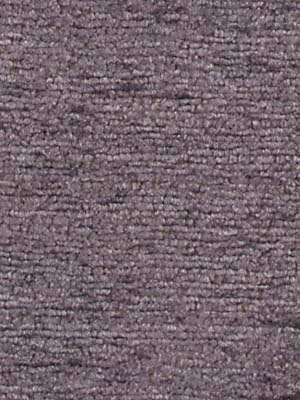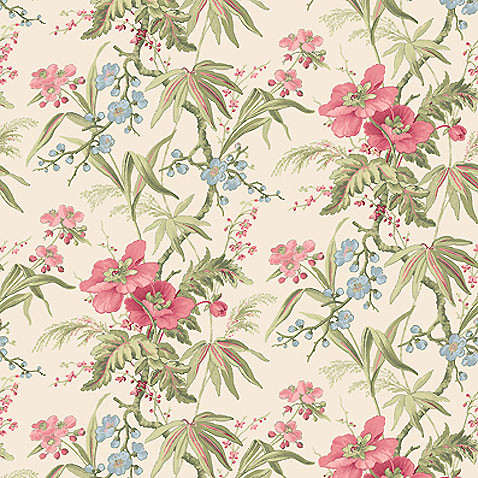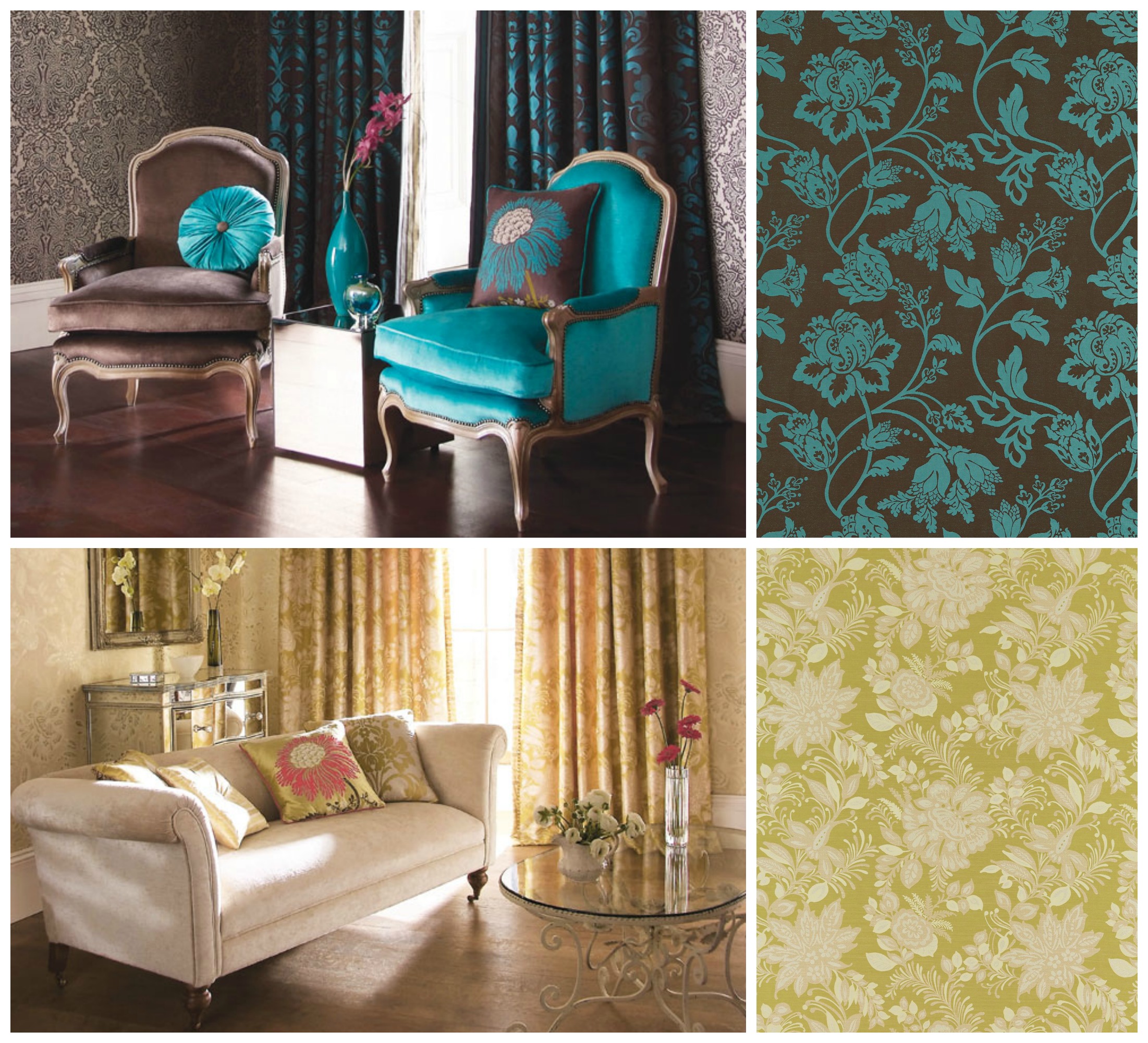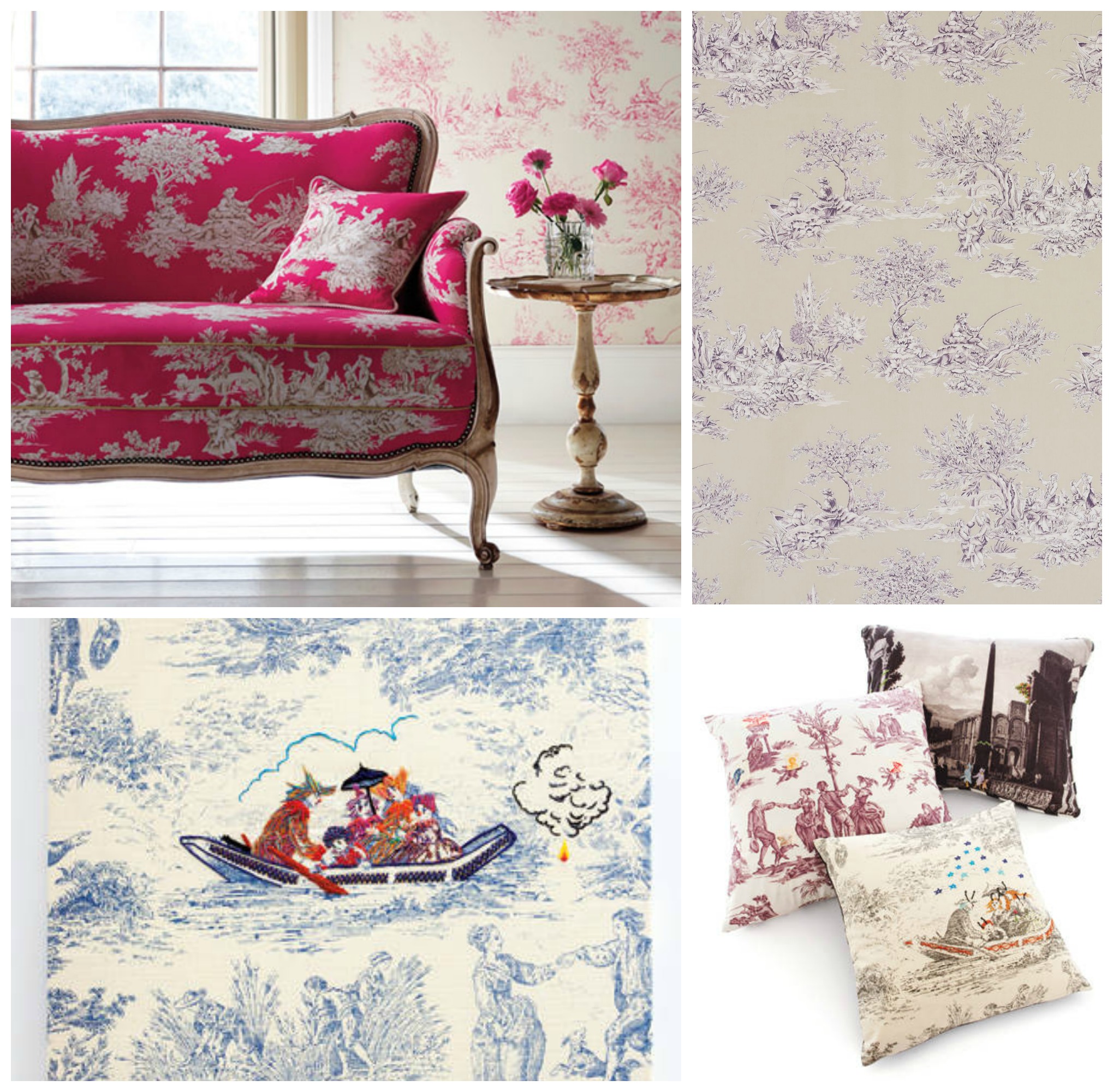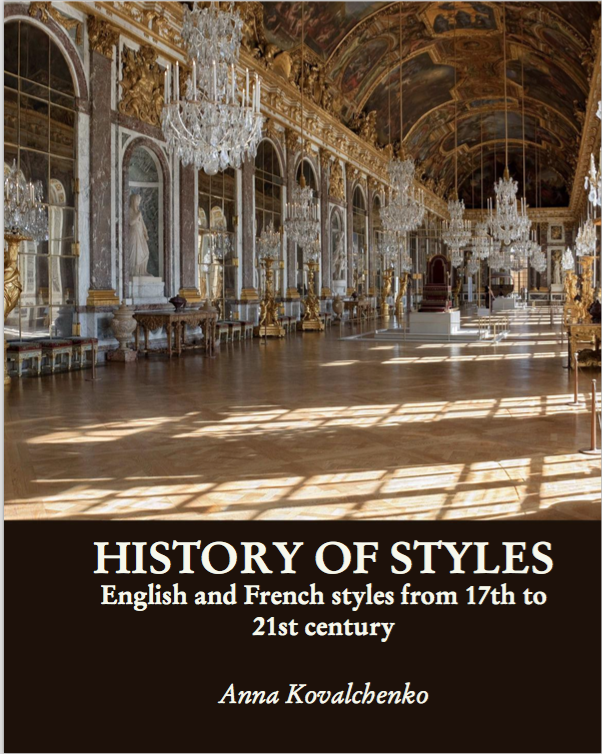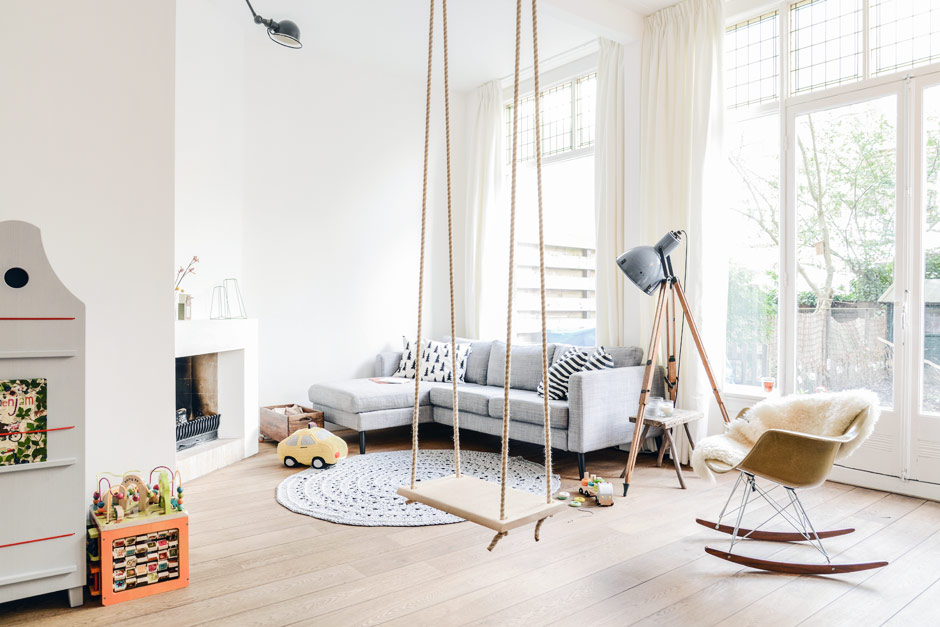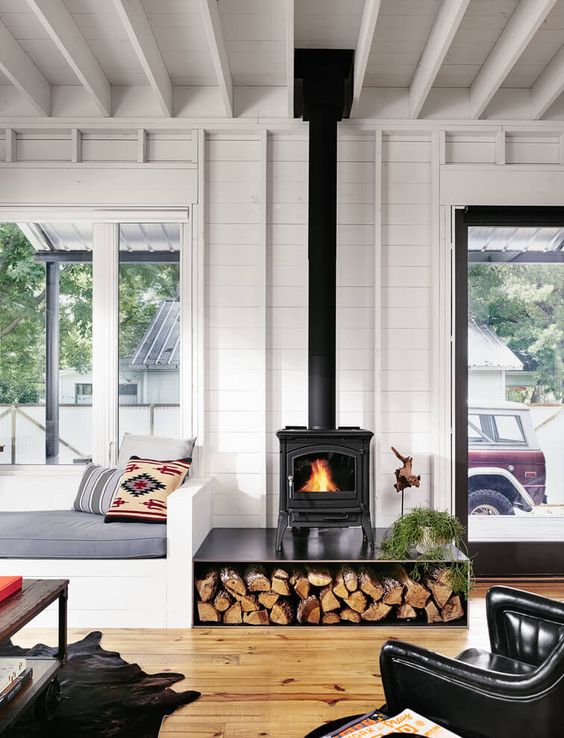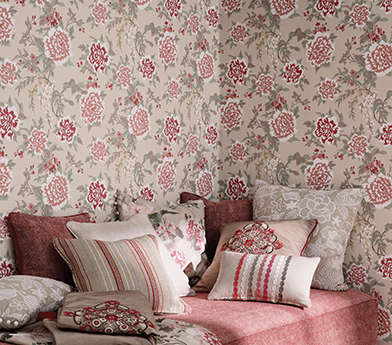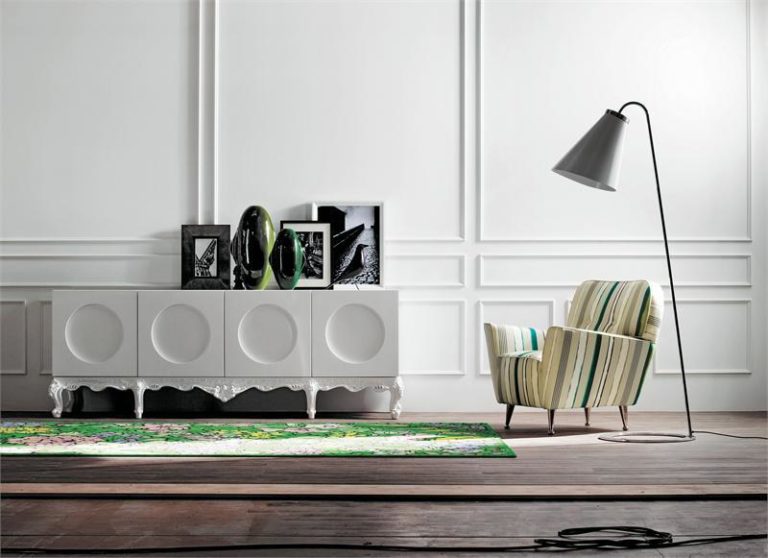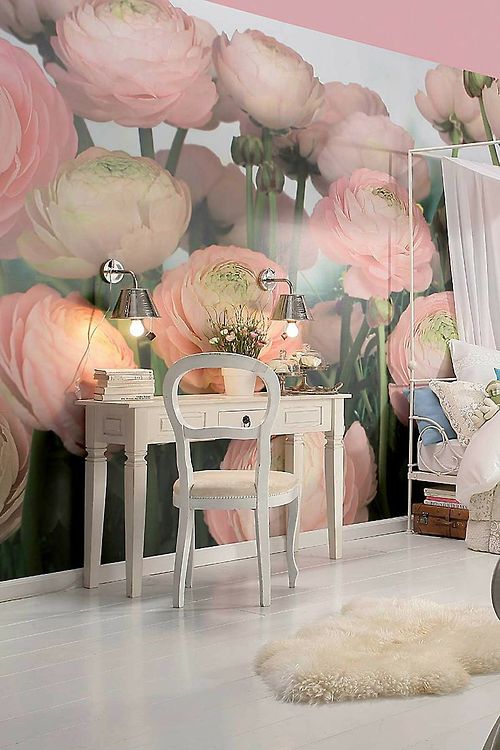Textiles Glossary – Home Decorating Fabrics from A to Z
Today the range of fabrics available on the market is huge. If you want to know the qualities of different textiles, understand what is the best use for them in interior design and learn how to care to prolong their life, then this article is for you.
Acetate
Synthetic fabric obtained from natural fibers as the result of special treatment. It is soft to touch and is often called “artificial silk”. Care: acetates do not crease and can be easily washed, preferably at a temperature below 40 degrees. Use: acetates are used in home decor the same way as silks – curtains, cushions, bedclothes.
Batik
Fabric named after the technique of drawing on cotton cloth, which appeared in Indonesia and Malaysia. It consists of applying a wax layer on those areas which should not be painted. After the wax is dry, it is removed and the tissue obtains the distinctive “cracked” effect. Care: at the time of purchase, consult your dealer if you can wash the material in the washing machine. Use: batik is good for making blankets and quilts in ethnic style.
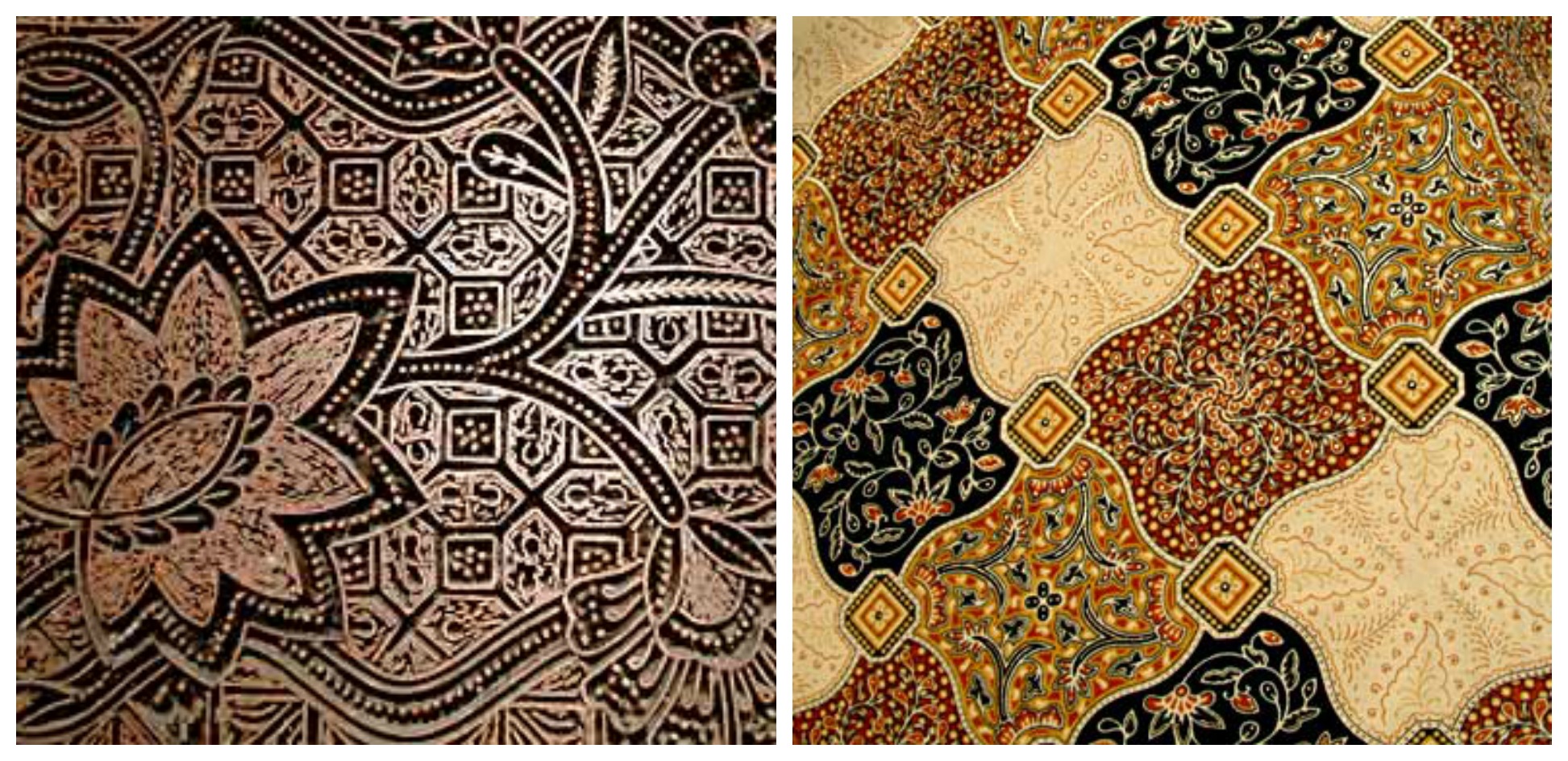
Brocade
Fabric embroidered with metal threads in the form of flowers and arabesques, creating a luxurious embossing on the surface. Currently, brocades can be made on the basis of linen, cotton and silk, embroidered with threads of different colors. Care: brocade is an expensive and delicate fabric which is recommended to dry clean to preserve the colors and texture. Use: it is a very durable fabric, suitable for upholstery and curtains in classic style.
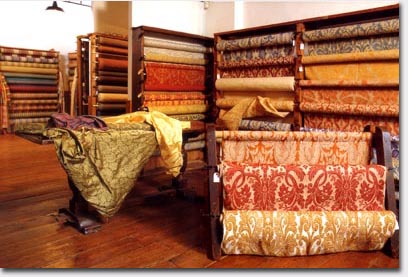
Calico – see Muslin
Cashmere
This fabric is made of yarn obtained from the undercoat of goats living in Kashmir – India region on the border with Pakistan. The diameter of the cashmere yarn is much thinner than other types of wool, which makes it much more pleasant and soft. Its natural color is gray or brown, but can also be white and black. Care: Like any other wool, cashmere doesn’t like water, so it is not recommended to wash it using the washing machine and tumble dryer – instead use dry cleaning. Use: in home decor cashmere is usually used for making throws and plaids, which create a warm and luxurious feel.
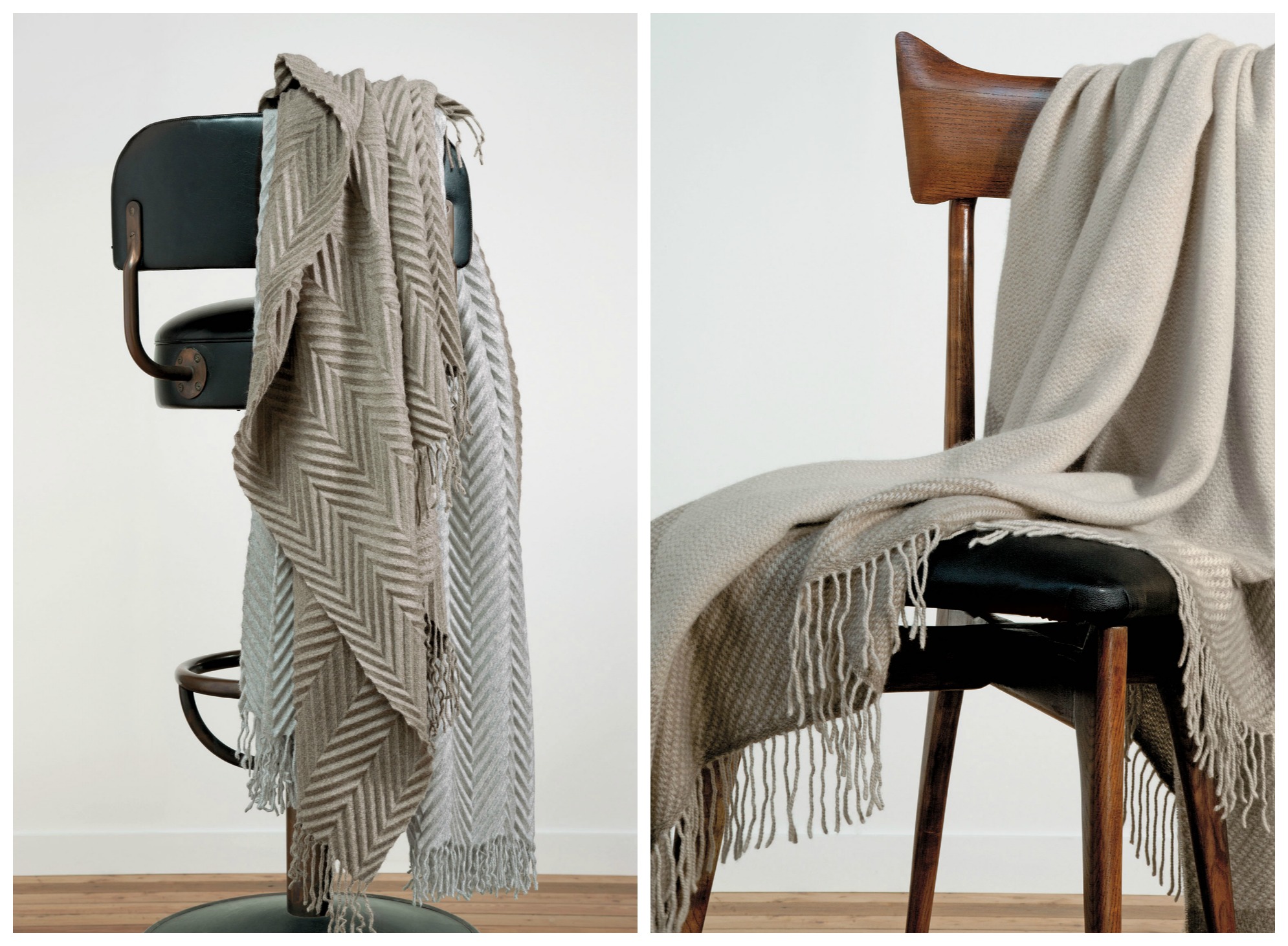
Chenille
Fabric made from the special yarn with velvety surface and short thick pile. It is usually produced from silk in a combination with wool or cotton, using special technology which results in amazing softness and unique light reflecting qualities. Use: chenille is perfect if you want to create a vintage ambiance in your house – use it for cushions, bedspreads, throws, upholstery and even rugs. Care: most of the chenille fabrics should be dry cleaned, if washed in the machine they shouldn’t be dried on high heat, never hang them as they will be strained.
Chiffon
VThe very lightweight fabric used for making curtains, blinds and canopies. Thanks to the transparency and vaporous texture chiffon is ideal for draperies. Care: Despite its delicate appearance, chiffon is possible to clean in the washing machine. Properties: Although originally chiffon was made from silk fibers, today you can find alternatives made from cotton, linen, and nylon, which are more durable.
Chintz
Chintz is a glazed calico textile with designs usually featuring colourful flowers or oriental arabesques. Use: for creating informal, fresh and feminine look chintz is a perfect choice. Use it for draperies – curtains, canopy beds, and upholstery – headboards, chairs, cushions. Care: refer to the fabrics label for care instructions. Dry cleaning is usually recommended to keep the glazed surface.
Cotton
Natural fabric produced from cotton-plants. Cotton is very durable and strong, it is often added to other tissues – natural and artificial. Usually, it is very soft. Care: it has the quality to shrink after the first wash. Can be washed in the washing machine and then tumble dried. Use: it is one of the most commonly used materials for upholstery and curtains
Damask
The fabric made of silk, cotton or linen, which got its name from the capital city of Syria. The fabric has an opaque background with weaved shiny patterns usually featuring flowers or arabesques. Care: dry cleaning. Use: damask works well in interiors done in classic style, use it for upholstery and curtains.
Jacquard
Fabric got its name from the French industrialist, who invented the machine for its production. It simplifies the manufacturing process of complex textiles, such as Damask and brocade. Care: Jacquard is very durable and wear-resistant. However, to keep it in top condition dry cleaning is preferable. Although there are Jacquards made of wool or viscose, the most common are produced from cotton. Use – this fabric is very popular for upholstery in classic style.
Jute
Jute is extremely strong natural fabric produced from vegetable fibers. Care: dry cleaning is preferable so the fabric does not lose its original colour. Use: jute can be made in different colors and is widely used in the interiors decorated in a rustic style.
Lace
Openwork fabric produced from cotton, silk or synthetic yarn. It has complex ornament which has open holes done by humans or machines. Care: hand wash it in cold water with mild detergent. Never use dryer – all lace should be air-dried. Use: in home decor lace is usually used for curtains, drapery and decorative cushions.
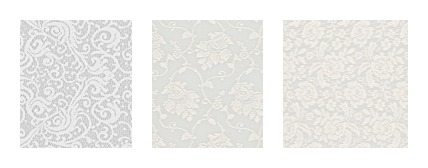
Linen
The natural fabric produced from flax fibers with beautiful rich texture. Care: the main disadvantage of linen is that it is easily wrinkled. To decrease it, synthetic fibers are often added to linen, which also helps to avoid the reducing of fabric after washing. Use: the strength and durability of linen make it ideal for sewing curtains and upholstery. Also it is often used for tablecloths and bedding.
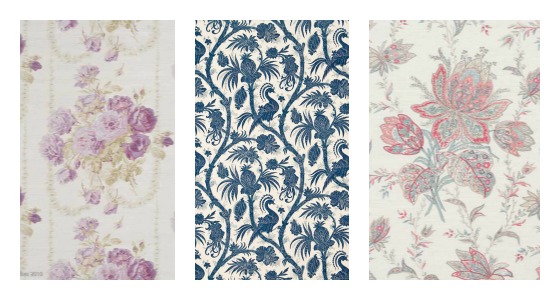
Linen Union
Cotton-linen blend. It is very durable and strong, used for upholstery, cushions, tablecloths, curtains. Care: can be washed in the washing machine with spin, no wring, with maximum temperature 40%. Linen union is very universal fabric, it can be used for different interior styles, but especially it suits traditional and country interiors.
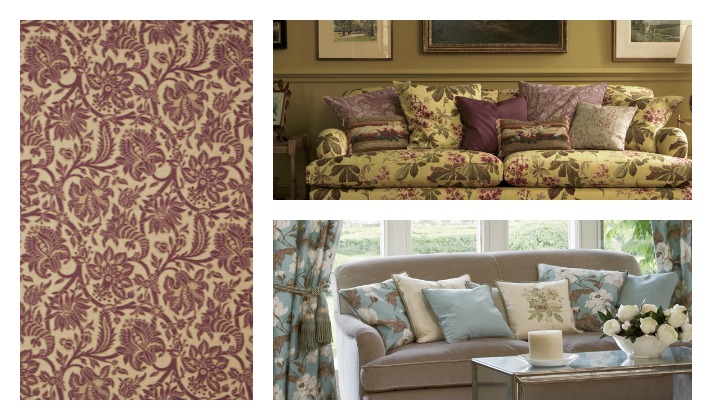
Moire
Cotton or silk fabric with rippled surface, solar rays reflected from it at different angles create an interesting effect resembling sea waves. Care: Depending on the composition it can be washed or dry-cleaned. Use: this fabric is often used to make curtains, decorative cushions, but it is not recommended for upholstery because after frequent touches it loses its luster.
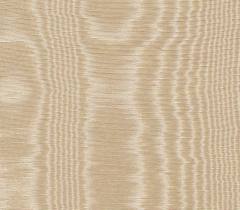
Muslin
A kind of finely woven cotton fabric introduced to Europe from the Middle East in the XVII century. The name of the fabric comes from Mosul – a town in northern Iraq where this fabric was initially made. In England this textile is also sometimes called Calico. Most of Muslins are made from 100% cotton, but there are some blends with synthetic fibers as well. Care – it can be washed in washing machine and tumble dried. It is better to iron it when it is still damp. Use – muslin is one of the most frequently used fabrics in interior design, mostly for bed linens, slipcovers, sheets, shades, and curtains.
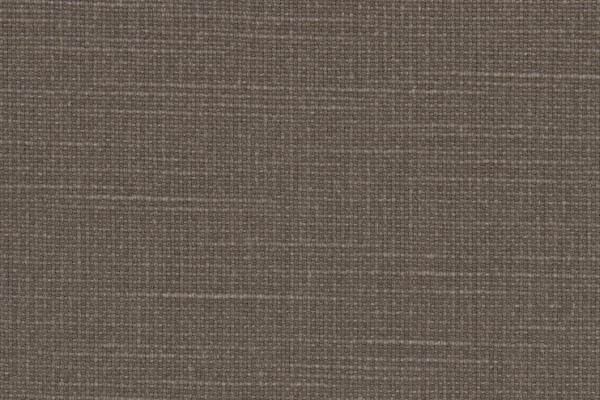
Organza
Organza is a very thin and sheer fabric produced from silk or synthetic yarn. Care: organza is easy to wash and dry, although it is better not to do it very frequently. Use: the ability to pass the sunlight makes it ideal for manufacturing curtains and blinds.
Rayon
Rayon is often considered as an artificial fabric which is a mistake. In fact, it is made from cellulose waste products. Care: the main enemy of this light and breathable material is water, so rayon should be dry cleaned only. Use: Rayon is used as artificial silk, although it can also imitate wool and cotton.
Satin
Derived from silk, satin has distinctive shine and smooth texture. Use: satin is very fragile, that’s why it is used mainly for decorative cushions and never for upholstery or window treatments.
Silk
The fabric is obtained from the cocoons of silkworms. Silk yarn is very strong and durable, and, as a result smooth, soft and shining fabric is produced. Care: the disadvantage of silk is that it fades in the sun and should be dry cleaned only, so it is often replaced by a more practical synthetic fabric. Use: the silk is used to make elegant flowing curtains and less often for furniture upholstery.
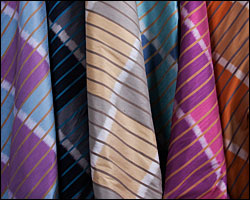
Ticking
Ticking is usually linen or cotton textiles with typical stripes pattern. Use: perfect for marine of nautical style interiors, it can be used for upholstery, curtains and cushion covers.
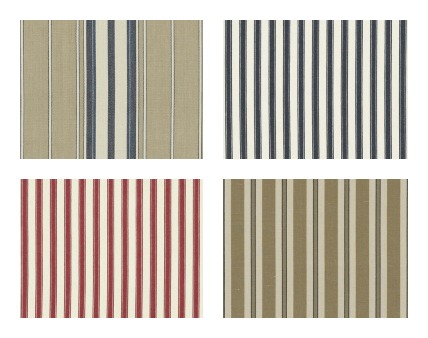
Toile de Jouy
Toile de Jouy or simply Toile is a type of pattern with a plain background, usually white or cream, and repeated patterns of very complex scenes – pastoral plots or flower compositions. Use: toiles work great for upholstery, cushion covers, bed linen and tablecloths. They look good in traditional, country-style houses or contemporary interiors with vintage twist. Care: dry cleaning only.
Velvet
Woolen fabric, originally made with addition of silk or viscose, and now other synthetic fibers that make it more practical. Care: the main drawback of velvet is that it tends to trample when used, and the fact that it can not be washed, only dry cleaned. Use: velvet looks nice as curtains or cushions in combination with antique furniture.
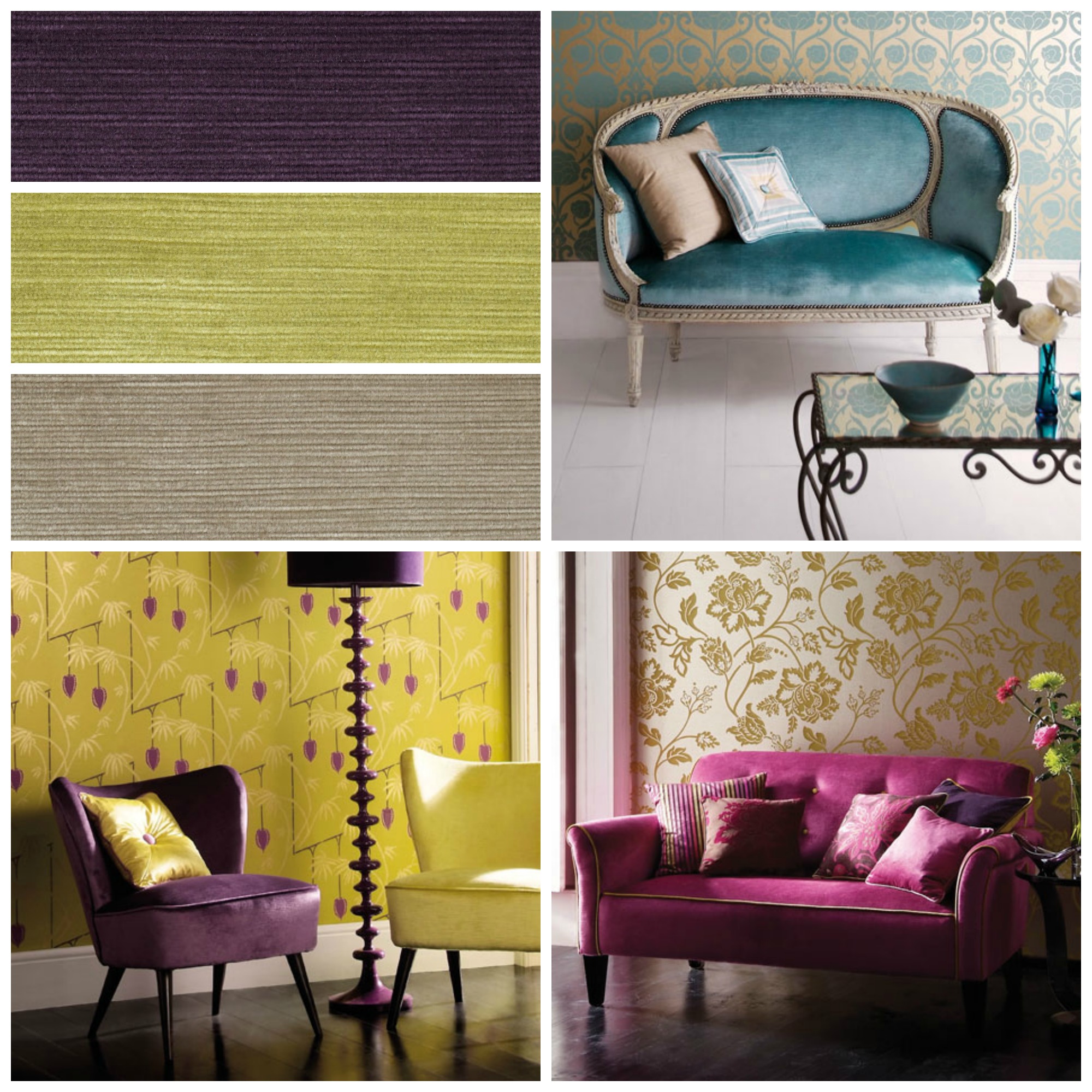
Velveteen
Dense fabric made of cotton or synthetic yarn, it resembles velvet, but has a shorter pile. Produced in a large range of colors and densities. Care: velveteen should be dry cleaned. Use: it is used for furniture upholstery to create an informal or rustic style. Can be smooth or ribbed.
Voile
A light, sheer, plain-weave fabric usually made from pure cotton or cotton blends with polyester and viscose. Use: mainly for soft furnishings – curtains and canopies. Care: it is easy to clean: it can be washed in a washing machine in cold water and on a delicate regime. It can be hung to dry and later ironed with a warm iron.
Wool
One of the most commonly used fabrics in home decoration produced from sheep’s wool. Care: the perfect care for wool is dry cleaning. Use: woolen cushions and throws will bring warmth to any corner of the house.
Studying interior design? Check out my History of Styles e-book:
Tracing the evolution of interior design — from the early English and French styles – Baroque, Rococo to 20th century Midcentury Modern and Art Deco – History of Styles is a stunningly illustrated guide to more than three hundred years of shifting trends and innovative developments in the world of interiors. From this book, you will learn how to define various styles and their main characteristics.

